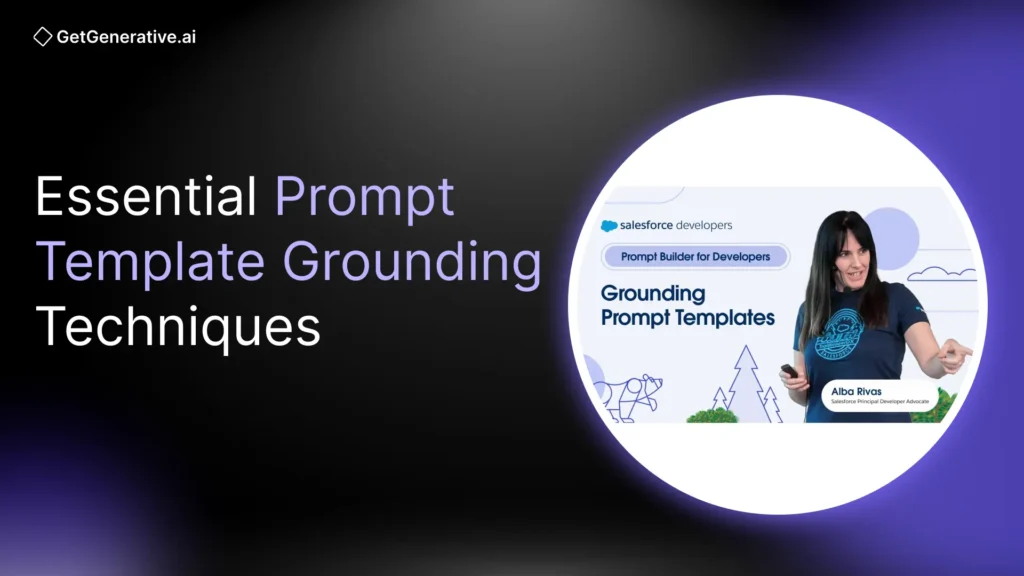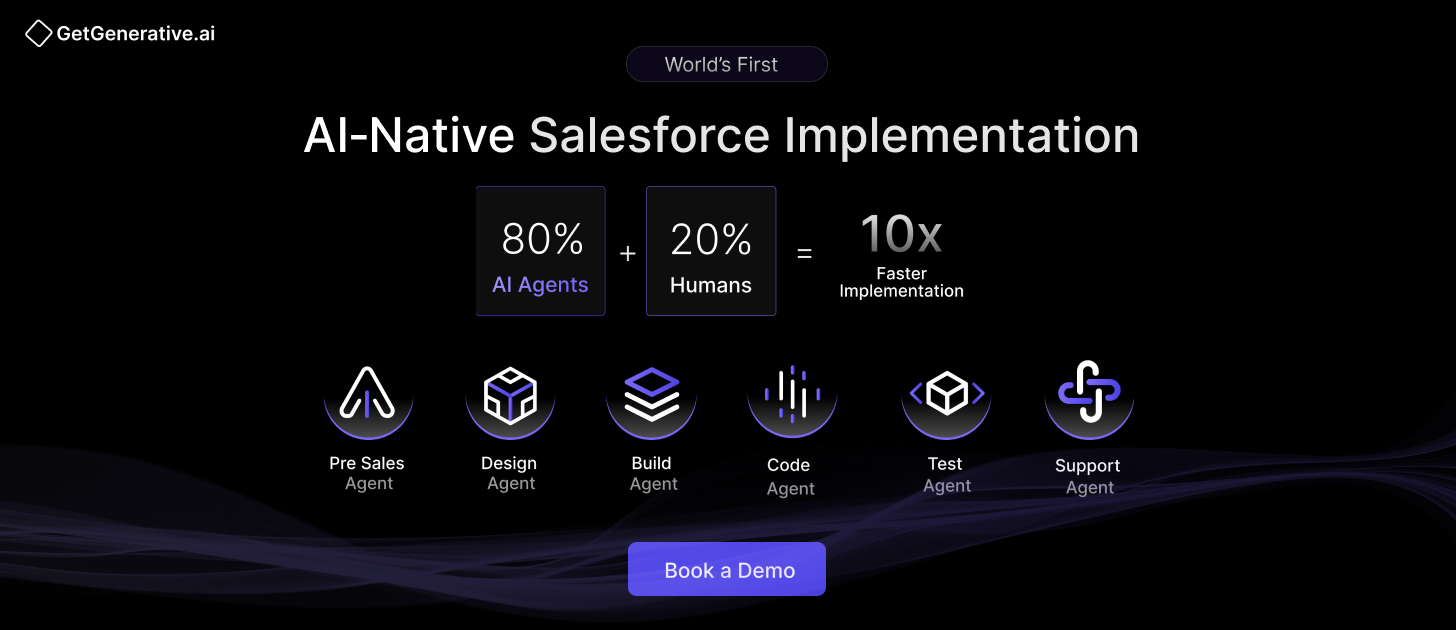Essential Prompt Template Grounding Techniques
Prompt templates are essential for generating contextually accurate and personalized AI responses. By grounding these templates, you provide AI systems with the necessary context to deliver outputs tailored to specific needs.
This blog delves into the techniques and tools for effectively grounding prompt templates, ensuring they produce reliable and meaningful results.
What Is Prompt Template Grounding?
Prompt template grounding involves embedding context-specific data into AI prompts, allowing large language models (LLMs) to generate responses rooted in real-world information. This process reduces the risk of generic or inaccurate outputs, enhancing the relevance and personalization of AI-driven solutions.
Grounding plays a pivotal role in improving the quality of AI responses. Without grounding, prompts may produce irrelevant or fabricated content due to the model’s reliance on incomplete training data. Grounding mitigates this issue by providing updated and accurate information from reliable sources.
Also Read – The Ultimate Salesforce Prompt Builder Cheat Sheet
Key Techniques for Grounding Prompt Templates
Integrating Record Merge Fields
Record merge fields link prompt templates directly to Salesforce object fields, ensuring real-time data integration. For example, grounding a sales email prompt with fields like contact names, purchase history, or account details allows the AI to produce outputs rich in personalized context.
Enhancing Prompts with Flow Merge Fields
Flows elevate prompt grounding by introducing dynamic logic. Salesforce Flow Builder enables users to merge data from multiple sources, consolidating insights into a single prompt. This technique is ideal for scenarios requiring complex decision-making or real-time updates.
Utilizing Apex Merge Fields
Apex provides developers with advanced capabilities to customize data integrations. By leveraging Apex merge fields, you can fetch data from external APIs, execute SOQL queries, or format information programmatically. This approach ensures precision and adaptability, even for the most intricate use cases.
Incorporating Data Cloud DMOs
Salesforce Data Cloud DMOs unify data across systems, providing a comprehensive view of customer interactions. Grounding prompts with DMOs enables seamless integration of insights from structured and unstructured datasets.
Referencing Related Lists
Related lists add depth to prompts by including data from associated records. For instance, a customer support prompt grounded with related lists can incorporate recent interactions, case statuses, and feedback, resulting in more detailed and empathetic responses.
Improving Accuracy with Retrieval Augmented Generation
Retrieval augmented generation (RAG) enhances grounding by adding unstructured data into prompts. Using tools like Einstein Search, organizations can retrieve relevant information from knowledge bases, emails, and chat logs. RAG ensures that LLMs have access to supplementary data, improving output quality and relevance.
Practical Steps to Ground Prompt Templates in Salesforce
Choosing the Right Object
When creating a prompt template in Salesforce, start by associating it with a specific object, such as accounts or opportunities. This initial step determines which merge fields are available for grounding.
Writing the Template
The Prompt Template Workspace in Salesforce provides a structured environment to design templates. Incorporate merge fields, flows, or Apex methods to align the template with your use case.
Testing and Previewing Outputs
Always test grounded templates to verify their effectiveness. Previewing ensures that the prompts generate accurate and meaningful responses, free from errors or inconsistencies.
Also Read – Model Builder Overview: Simplifying AI Model Creation
Advanced Techniques for Grounding Prompt Templates
Grounding with Record Snapshots
Record snapshots capture a moment in time, allowing prompt templates to reference historical data. This approach is especially useful for creating prompts that require a retrospective view, such as generating performance reviews or customer interaction summaries.
Using Data Graphs for Unified Insights
Data graphs consolidate information from multiple sources into a centralized dataset. Grounding templates with data graphs provides a holistic perspective, enabling the AI to access a 360-degree view of customer activities, preferences, and behaviors.
Integrating Real-Time Data with RAG
RAG enables prompts to include real-time, unstructured data that isn’t stored in standard databases. For example, a marketing prompt could draw on recent email conversations or social media interactions, making the output more timely and relevant.
Balancing Flows and Apex in Grounding
The choice between flows and Apex depends on your specific requirements. Flows are ideal for no-code users who need to incorporate straightforward logic, while Apex offers extensive customization for developers handling complex scenarios or integrating external systems.
Benefits of Effective Grounding Techniques
1. Enhanced Personalization
Grounded prompts deliver outputs that feel tailor-made for the end user. Whether it’s a sales pitch or a customer service reply, grounded templates add specific details that resonate with recipients.
2. Improved Data Accuracy
By using real-time and verified data, grounding ensures that AI-generated responses are both factual and relevant, minimizing errors and improving reliability.
3. Streamlined Workflow Integration
Grounding allows templates to seamlessly integrate with existing workflows. Tools like Salesforce Flow Builder and Apex make it easier to connect CRM data, external APIs, and custom logic.
4. Stronger Data Security
Grounding techniques often incorporate privacy safeguards, such as Salesforce’s zero-retention agreements and data masking tools, ensuring sensitive information is protected during AI processing.
5. Reduced Hallucinations
Grounded templates reduce the likelihood of LLMs generating hallucinations or irrelevant content. By anchoring prompts in factual data, responses are more trustworthy and actionable.
Also Read – Best Resources to Learn Generative AI for Salesforce Professionals
Applications of Grounded Prompt Templates
Sales and Marketing
Grounded templates can craft personalized sales pitches, targeted email campaigns, and promotional materials. By leveraging CRM data, they highlight relevant details, such as past purchases or client preferences, to make communications more impactful.
Customer Support
AI-generated responses in customer service are significantly improved with grounding. Templates referencing previous interactions or case histories provide empathetic and precise solutions to customer inquiries.
Operational Reporting
Grounding templates with real-time and historical data allows organizations to generate detailed reports, enabling better decision-making and performance tracking.
Training and Knowledge Management
By grounding prompts with internal knowledge bases and training materials, organizations can create AI outputs that align with company standards, ensuring consistency and accuracy.
Overcoming Challenges in Grounding Prompt Templates
1. Managing Complex Data
Integrating diverse data sources can be challenging. Using tools like Data Cloud DMOs and data graphs simplifies the process by unifying datasets into accessible formats.
2. Ensuring Scalability
As organizations grow, grounding systems must scale to accommodate increasing data volumes. Techniques like RAG and Salesforce Flow Builder support scalability by dynamically retrieving and processing relevant information.
3. Maintaining Compliance
Grounding techniques must align with data privacy regulations. Adopting systems with robust security protocols, such as Salesforce’s Einstein Trust Layer, ensures compliance while maintaining functionality.
Conclusion
Grounding prompt templates transforms AI outputs from generic to exceptional by embedding context-specific data into every response. With tools like Salesforce Flow Builder, Apex, and Data Cloud, businesses can create templates that enhance personalization, improve accuracy, and secure data privacy.
At GetGenerative.ai, we’ve reimagined Salesforce implementation—built from the ground up with AI at the core. This isn’t legacy delivery with AI added on. It’s a faster, smarter, AI-native approach powered by our proprietary platform.
👉 Explore our Salesforce AI consulting services
FAQs
1. What is the purpose of grounding prompt templates?
Grounding enriches AI prompts with relevant, accurate data, improving personalization and reducing errors in AI outputs.
2. How does RAG improve grounding?
RAG retrieves unstructured data, like knowledge bases or chat logs, and incorporates it into prompts, enhancing relevance and context.
3. What is the difference between flows and Apex in grounding?
Flows are a no-code solution for integrating logic, while Apex allows developers to customize templates with external systems and advanced data formatting.
4. Can grounding reduce AI hallucinations?
Yes, grounding minimizes hallucinations by anchoring prompts in real-time, verified data.
5. How does Salesforce ensure data privacy in grounding?
Salesforce uses tools like the Einstein Trust Layer and data masking to protect sensitive information during the grounding process.




